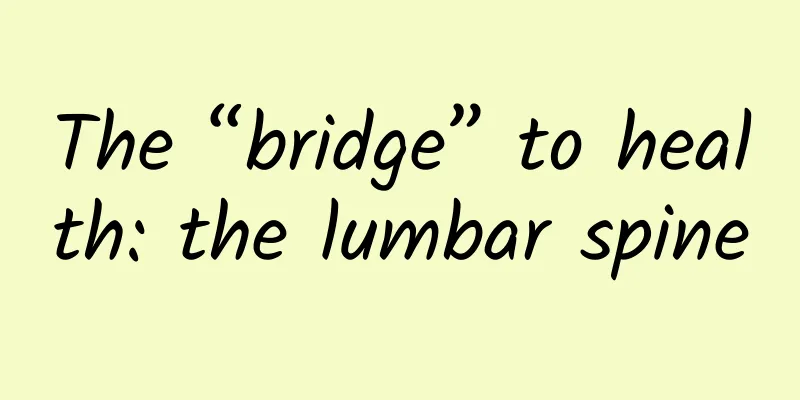How much do you know about otolithiasis?

|
Dizziness, vertigo, nausea... When these symptoms occur, many people think that there is something wrong with the cervical spine, and buy medicine for oral or external use. In fact, the above symptoms are not necessarily caused by problems with the cervical spine. There is another common disease that can also cause dizziness, that is, otolithiasis. Aren't ears for hearing sounds? Can they also cause dizziness? ? There are stones inside? ? ? With these confusions, let's learn about it together! The ear is composed of the outer ear, the middle ear and the inner ear. The inner ear is composed of two parts, one is the cochlea responsible for hearing, and the other is the vestibule responsible for balance. Problems with the cochlea will lead to deafness, and problems with the vestibule will cause dizziness. Why does otolithiasis cause dizziness? When the body's posture is incorrect or changes, the otolith particles in the cochlea will fall off and fall into the semicircular canal on the same side, causing labyrinth concussion, resulting in obstruction of vestibular function, which leads to dizziness. There are stones in the ears? Yes, it is indeed a stone, because its main component is calcium carbonate, which is a stone used to maintain balance. The symptoms of otolithiasis are mainly dizziness, unsteady walking with a floating feeling, nystagmus, ringing in the ears, sweating, pale face, etc. In severe cases, nausea and vomiting may occur. The causes of otolithiasis are mostly closely related to head trauma, ear surgery, insufficient blood supply to the brain, viral infection, excessive mental stress, overwork, poor rest, osteoporosis, etc. Characteristics of otolithiasis: 1. Latent period: Dizziness occurs a few seconds after the head position changes, usually when getting up in the early morning. 2. Rotational: Vertigo is accompanied by a distinct sense of rotation. Patients can see objects rotating or feel themselves rotating with their eyes closed. 3. Transient: Vertigo stops on its own in less than 1 minute. 4. Conversion: Returning the head to its original position can induce vertigo again. 5. Fatigue: The symptoms of vertigo gradually ease after multiple changes in head position. Some patients with otolithiasis can recover on their own, and manual repositioning is currently the preferred treatment method for patients who cannot recover. By changing the head posture, the otoliths can be smoothly moved out of the semicircular canals and returned to the utricle where they were originally located. The patient's vertigo symptoms disappear immediately, and the effect is immediate, with a one-time cure rate of more than 93%. Studies in recent years have shown that manual repositioning combined with drug treatment will have a very good effect and significantly improve the cure rate. Drug treatment mostly uses anti-vertigo or anticholinergic Western medicines for treatment. These drugs are mainly used to inhibit vestibular reactions and reduce patients' dizziness and nausea and vomiting symptoms. Commonly used Western medicines for the treatment of otolithiasis include flunarizine, promethazine hydrochloride, betahistine mesylate, etc. These drugs do not need to be taken for a long time, and they can be stopped when the symptoms disappear. Many people believe that the dizziness caused by otolithiasis only lasts for a few seconds and there will be no big problem. This is a big mistake. Otolithiasis can actually cause great harm to the human body. First of all, otolithiasis can affect people's normal life. Patients with otolithiasis will experience dizziness when the disease occurs, and in severe cases, it can induce nausea and vomiting. Secondly, if otolithiasis occurs frequently and for a long time, it will bring great mental pressure to the patient, causing anxiety and fear, affecting the patient's communication in daily work and life, and seriously affecting the patient's quality of life. Dizziness can also cause the body to fall and cause injuries to other parts of the body, which is harmful to physical health. Otolithiasis occurs in all age groups, and the incidence rate generally accounts for 30% of vertigo patients. There are more female patients, and it is a unilateral disease, which is rare in bilateral cases. It is more common in autumn and winter. Common causes are inflammation, staying up late, excessive stress, decreased immunity, endocrine disorders, etc. There is also a view that human body trauma, aging of otolith membrane function and strenuous exercise can also cause otolithiasis. When short-term vertigo occurs and is related to body position, you should see an otolaryngologist in time and take effective treatment methods. Kind tips: 1. Try to eat less spicy and greasy food. 2. Avoid water entering your ears when taking a bath. 3. Ensure adequate sleep, avoid staying up late and overwork, and avoid strenuous exercise. 4. After the otolithiasis is repositioned, the patient should rest for half an hour before leaving the hospital. 5. Patients who have just undergone otolith repositioning should not drive. At the same time, they should try to avoid lying on the affected side within three days. References [1] PAN Tao, LI Xinying, SUN Yujie. Clinical observation of manual repositioning combined with betahistine mesylate in the treatment of otolithiasis[J]. Chinese Journal of Modern Drug Application, 2019(4): 131-132. [2] Chen Yihang. Analysis of the treatment of otolithiasis with integrated traditional Chinese and western medicine[J]. Chinese Journal of Health Care and Nutrition, 2018(29): 312-313. [3] Cheng Yu. Comparison of the effects of EPley maneuver and Barbecue rolling maneuver in the treatment of otolithiasis[J]. Family Medicine, 2018(11): 7. [4] Li Chongyuan. Observation on the efficacy of manual repositioning combined with medication in the treatment of otolithiasis vertigo[J]. Chinese Medical Guide, 2019, 17(25): 159. [5] Wang Shengli. Observation on the efficacy of betahistine mesylate in the treatment of BPPV[J]. Northern Pharmaceutical Journal, 2019, 16(1): 95-96. [6] Editorial Board of Chinese Journal of Otorhinolaryngology Head and Neck Surgery, Chinese Society of Otorhinolaryngology Head and Neck Surgery. Guidelines for the diagnosis and treatment of benign paroxysmal positional vertigo (2017)[J]. Chinese Journal of Otorhinolaryngology Head and Neck Surgery, 2017, 52(3): 173-177. |
>>: A man ate 12 pills a day and had half of his stomach removed! Doctors urgently stopped him
Recommend
What should I do if my vulva is itchy and has small lumps?
When there is a foreign object in the vagina, it ...
How to break the "medical addiction"? Uncovering the strange baron behind "Munchausen syndrome"
Leviathan Press: Seeing Munchausen syndrome, it i...
Can I drink buckwheat tea during my period?
In order to spend the menstrual period more relax...
Long-term breaststroke body shape changes in women
Swimming is a healthy sport. It can exercise lung...
What is the best and fastest way to stop night feeding?
Many parents are very troubled by their babies of...
Lilies are easy to grow. If you don't grow them well, they will bloom longer.
Lilies are very common in our daily life. Because...
How long does it take for a breast abscess incision to heal? This is what the experts answered
Some breast abscess diseases cannot be cured by s...
What to do if the baby hasn't entered the pelvis at 37 weeks
Before the fetus is about to be born, it can only...
What to do with vaginal pain? Do you know these methods?
The vagina is a particularly private and sensitiv...
What is the reason for back pain during menstruation?
It is a common phenomenon for women to experience...
Food Guide 2023 | Recommended summer recipes for children and adolescents with growth retardation
...
Can foot soaking cure adenomyosis?
We all know ways to relieve physical fatigue afte...
What to do when the office is divided into gangs? How to stand on the side when the company gangs fight
It is said that wherever there are people, there ...
Slow growth of gestational sac
The gestational sac is the first thing that turns...
Is it okay for babies to have "cross eyes"? The National Health Commission explains common misunderstandings about children's eye health
People's Daily, Beijing, May 31 (Reporter Sun...









